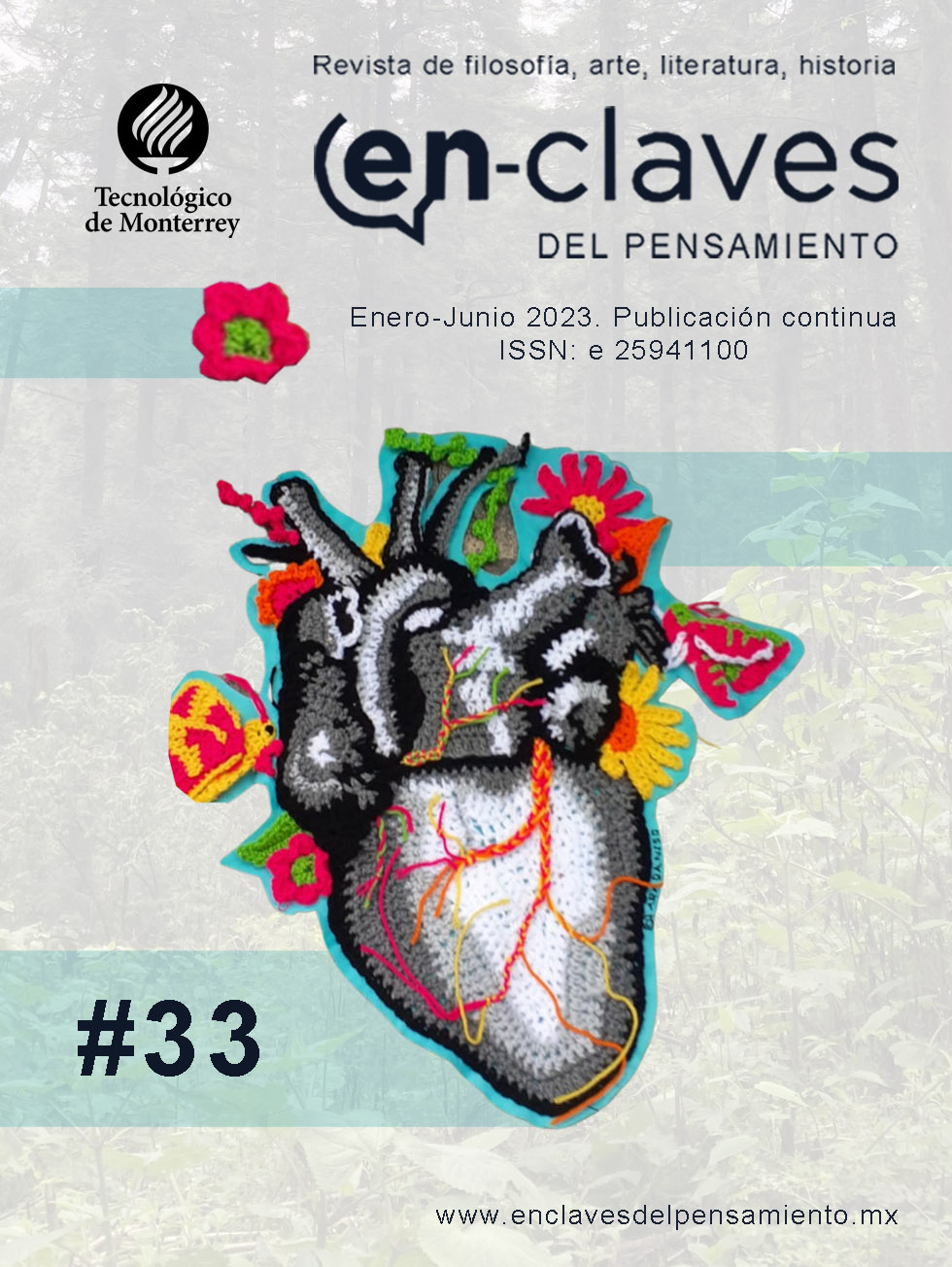The Citational Structure of (Dis)ability
Main Article Content
The so-called social model of disability has triggered a paradigm shift regarding our understanding of what a body is and how we attribute capacities to it. However, its conception of disability as a relationship between subject and environment has not been properly clarified, remaining ambiguous and lacking in content. Drawing on the work of Judith Butler and her reappropriation of derridean citationality, I argue that the idea of capacity expressed as the subject’s relationship to the environment discloses a citational structure, that is, it reveals that capacity is sustained by recourse to a pre-existing environment that enables it. The article begins by outlining the main features of both the social and medical models, pointing out their advantages and limitations. It then retrieves the relationship between subject and environment as a key element of capable action and elaborates on it through the concept of citationality, providing multiple examples. Finally, it explicitly dissociates itself from the social model by criticizing the idea that every disability is based on a personal limitation. This last section also allows the article to further explore the key concepts of 'norm' and 'citation' using the example of communication.
Butler, Judith. ¿Qué mundo es este? Barcelona: Arcadia, 2022.
Butler, Judith. “Cuerpos en alianza y política de la calle”. Trasversales 26 (2012).
Butler, Judith. Cuerpos que importan. Barcelona: Paidós, 2002.
Butler, Judith. “Las categorías nos dicen más sobre la necesidad de categorizar los cuerpos que sobre los cuerpos mismos”. En Violencia de Estado, guerra, resistencia, 47-81. Madrid: Katz Editores, 2011.
Butler, Judith. Lenguaje, poder e identidad. Madrid: Editorial Síntesis, 2004.
Butler, Judith. Resistencias. México: Paradiso, 2018.
Canguilhem, Georges. The Normal and the Pathological. New York: Zone Books, 1991.
Crompton, Catherine J., Danielle Ropar, Claire V.M. Evans-Williams, Emma G. Flynn, y Sue Fletcher-Watson. “Autistic peer-to-peer information transfer is highly effective”. Autism 24, n.o 7 (2020): 1704-12. https://doi.org/10.1177/1362361320919286. DOI: https://doi.org/10.1177/1362361320919286
Derrida, Jacques. “Firma, acontecimiento, contexto”. En Márgenes de la filosofía, 347-72. Madrid: Ediciones Cátedra, 2013.
Fletcher-Watson, Sue, y Geoffrey Bird. “Autism and Empathy: What are the Real Links?” Autism. SAGE Publications Ltd, 1 de enero de 2020. https://doi.org/10.1177/1362361319883506. DOI: https://doi.org/10.1177/1362361319883506
Gibson, James Jerome. The Ecological Approach to Visual Perception. New York: Psychology Press, 1979.
Guerra, Itxi. Lucha contra el capacitismo. Anarquismo y capacitismo. Madrid: Editorial Imperdible, 2021.
Hamraie, A, y K Fritsch. “Crip Technoscience Manifesto”. Catalyst: Feminism, Theory, Technoscience 5, núm. 1 (2019): 1-34. https://doi.org/10.28968/cftt.v5i1.29607. DOI: https://doi.org/10.28968/cftt.v5i1.29607
Lewiecki-Wilson, Cynthia, y Jennifer Cellio. Disability and Mothering: Liminal Spaces of Embodied Knowledge. New York: Syracuse University Press, 2011.
Milton, Damian E. M. “On the Ontological Status of Autism: the ‘Double Empathy Problem’”. Disability & Society 27, núm. 6 (1 de octubre de 2012): 883-87. https://doi.org/10.1177/1362361319883506. DOI: https://doi.org/10.1080/09687599.2012.710008
Oliver, Michael. Understanding Disability: From Theory to Practice. Basingstoke: Macmillan, 1996. DOI: https://doi.org/10.1007/978-1-349-24269-6
Reynolds, Joel Michael. The Life Worth Living. Disability, Pain, and Morality. London: University of Minnesota Press, 2022.
Rich, Adrienne. Sangre, pan y poesía. Prosa escogida 1979-1985. Barcelona: Icaria, 1986.
Shakespeare, Tom. “Social models of disability and other life strategies”. Scandinavian Journal of Disability Research 6, núm. 1 (2004): 8-21. https://doi.org/10.1080/15017410409512636. DOI: https://doi.org/10.1080/15017410409512636
Shakespeare, Tom. “The Social Model of Disability”. En The Disability Studies Reader, editado por Lennard J Davis, 214-21. New York: Routledge, 2013.
Shakespeare, Tom, y Nicholas Watson. “Beyond Models: Understanding the Complexity of Disabled People’s Lives”. En New Directions in the Sociology of Chronic and Disabling Conditions, 57-76. London: Palgrave Macmillan, 2010. DOI: https://doi.org/10.1057/9780230297432_4
Shakespeare, Tom, y Nicholas Watson. “The Social Model of Disability: An Outdated Ideology?”. ‘Research in Social Science and Disability 2 (2002): 9-28. https://doi.org/10.1016/S1479-3547(01)80018-X. DOI: https://doi.org/10.1016/S1479-3547(01)80018-X
Simplican, Stacy Clifford. The Capacity Contract. Intellectual Disability and the Question of Citizenship. London: University of Minnesota Press, 2015. DOI: https://doi.org/10.5749/minnesota/9780816693979.001.0001
Svenaeus, Fredrik. Phenomenological Bioethics. Medical Technologies, Human Suffering, and the Meaning of Being Alive. New York: Routledge, 2018. DOI: https://doi.org/10.4324/9781315210131
Toro, Juan, Julian Kiverstein, y Erik Rietveld. “The Ecological-Enactive Model of Disability: Why Disability Does Not Entail Pathological Embodiment”. Front. Psychol 11 (2020): 1-15. https://doi.org/10.3389/fpsyg.2020.01162. DOI: https://doi.org/10.3389/fpsyg.2020.01162
Zola, Irving Kenneth. “Toward the Necessary Universalizing of a Disability Policy”. The Milbank Quarterly 83, núm. 4 (2005): 1-27. https://doi.org/10.1111/j.1468-0009.2005.00436.x. DOI: https://doi.org/10.1111/j.1468-0009.2005.00436.x
Article Details

This work is licensed under a Creative Commons Attribution-NonCommercial 4.0 International License.













